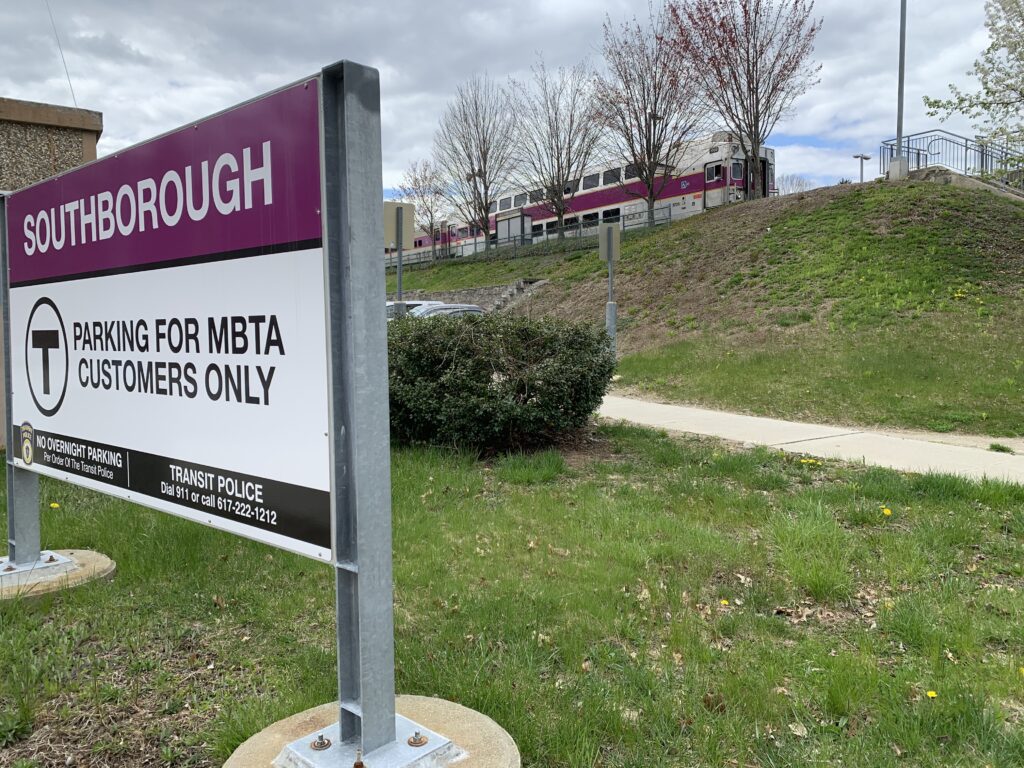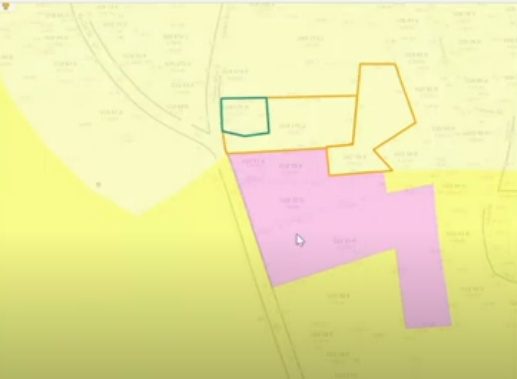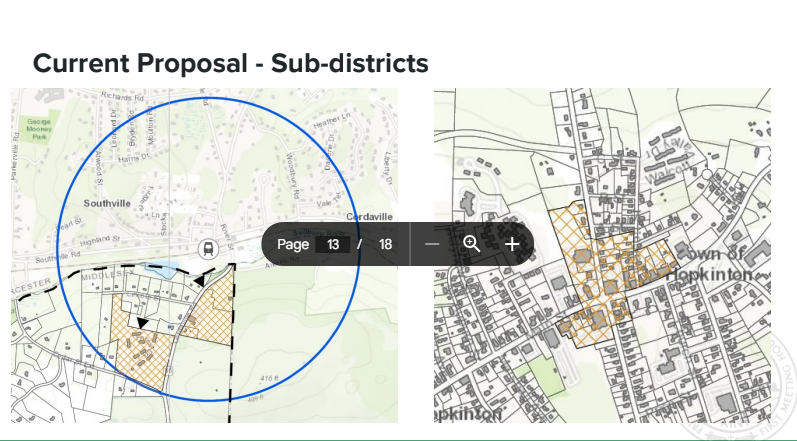The Zoning Advisory Committee at its meeting Monday night voted to recommend three plans to the Planning Board that would comply with MBTA Communities Act zoning requirements for its consideration.
The motion that ZAC approved in a 5-1-1 vote made clear that the preferred option was the plan that was presented at May’s Annual Town Meeting. It was narrowly rejected by eight votes, with 118 in favor and 126 opposed, despite receiving kudos from the state for adherence to compliance guidelines. Much of the opposition came from residents who live at or near The Preserve condominium complex because their property was included in the zoning. That plan also included a portion to the downtown area, the Carbone’s Restaurant property on Cedar Street and two parcels adjacent to it.
The other two options also included the downtown area, with some tweaking of the boundaries. One included the Indian Brook condominium complex, while the other option included the Walcott Valley townhouse condominium community. The ZAC vote identified the original plan as the preferred option, the Walcott Valley plan as the second and Indian Brook proposal as ZAC’s third choice. Ron Foisy voted against the motion, while Curtis Smithson abstained.
The Planning Board will review these options before recommending two options that a Special Town Meeting will decide between in November, if Town Meeting votes to comply with the state’s mandate. The Planning Board can modify these plans before including them in a Special Town Meeting article.
Under the MBTA Communities statute, also referred to as 3A, 177 cities and towns that are in the Massachusetts Bay Transit Authority’s service area must approve new zoning to permit multifamily housing near public transportation options. The denser housing, in theory, would encourage more people to take the T and depend less on cars. It also would help meet the state’s demand for more housing.
Hopkinton was designated as an MBTA-adjacent community because of its proximity to the Southborough commuter rail station. As such, it would be required to zone for 750 housing units, a density of 15 units per acre for 50 developable acres.
Proposed districts evaluated
Principal Planner John Gelcich reviewed the previously proposed plan and introduced the two new ones. He displayed maps that highlighted the areas under consideration in each proposal. The three parameters that need to be met are district size, unit capacity and overall density across the district and subdistricts.
The initially proposed plan met the compliance requirements with a unit capacity of 814, as well as 17.2 units per acre and district acreage of 58.4 acres.
The Indian Brook proposal includes the Indian Brook condos on Elm Street and a slightly expanded downtown area compared with the first plan in order to meet the land compliance factor. This proposal is one unit short of complying with the MBTA zoning guidelines with 749. It meets the other two factors with 16.2 units per acre and a district acreage area of 50.2 acres. The Planning Board can choose to modify the density of this plan to meet the requirements, Gelcich noted.
The Walcott Valley proposal includes the Walcott Valley condos and an expanded downtown area. It also contains the Upper Cedar Street area described in the first proposal but leaves out The Preserve. This option barely meets the unit requirements with 754 units and 51.7 acres but exceeds the units per acre requirement with 19.
Chair Ted Barker-Hook asked Gelcich “how nervous” he would be presenting such a close option to the state. Gelcich said he hoped that that the state would “allow a stay” if that happened so the town could vote on an amended version at the 2025 Annual Town Meeting.
As an aside, Smithson referenced the proposed mixed-use development downtown at the site of the former Hopkinton Drug/Hopkinton Card and Gift Shop building at 48-52 Main Street. The Historical Commission recently rescinded a demolition delay for the home at 6 Cedar Street, allowing the proposed 60-unit development proposal to move forward to the Planning Board.
Gelcich explained that while it is scheduled to be discussed at the Planning Board meeting next Monday, it likely will be continued because the applicant may not be able to attend the meeting.
Barker-Hook noted that there is “a push” to extend MWRTA bus service to the Southborough commuter rail station. This would augment the downtown’s compliance with “the spirit of the law” to build near public transit options. Gelcich added that the bus line being discussed would go up to Littleton and down to Milford.
The chair also discussed the “delicate balance” of meeting the state mandate while not encouraging “rapid development.”
“I think that we are in agreement with most if not all of the Planning Board in that we certainly want to be within the law,” Barker-Hook stressed. He noted that noncompliance could lead to a lawsuit and the potential loss of state funding.
Barker-Hook said his concern with the Indian Brook proposal was that it is not near public transportation and would compound traffic issues there if redeveloped. One positive he noted was that a quick search showed that a current unit at Indian Brook costs about $100,000 more than one at Walcott Valley. This might make a developer less likely to pursue it, although more units could fit there.

















0 Comments